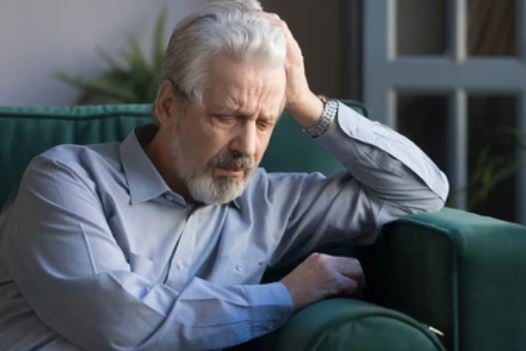Late Life Depression 101
By AccentCareUnderstanding the symptoms and consequences of late life depression is vital for all caregivers working with our aging population. Join us as we discuss what late life depression looks like, strategies for improving detection, and options for treating it.
Did you know that by 2030 depression is projected to be the second leading cause of disability worldwide and the number one cause of disability in high-income countries?

This is a serious concern for caregivers of all kinds – but for those providing care in the home through home health, personal care services, or hospice care – the threat becomes more apparent and more pressing because of Late Life Depression (LLD). Recognizing LLD in patients and understanding how to move forward with their care is paramount to your success.
LLD is the presence of a depressive syndrome consistent with DSM criteria in an adult aged 65 or older.
"This isn't a situational depression but instead a Major Depressive Disorder. It is more challenging to identify and more difficult to treat" said Brian Connelly, RN, BSN, BHN, Behavioral Care Manager for AccentCare in the western United States.
The DSM Diagnosis of Major Depressive Disorder
- 5 or more symptoms lasting 2 or more weeks
- Must have either depressed mood or loss of interest/pleasure
- Symptoms must cause significant distress or impairment
- No manic or hypomanic behavior
Between the years 2000 and 2020 the number of older adults that have experienced a major depressive episode within the last year increased by 60%. And, for those individuals facing progressive or chronic diseases and receiving palliative care, the depression rates are as high as 24% to 70%.
Recognizing LLD
A critical reason for recognizing LLD is the increased risk it places on the geriatric population. Comorbid chronic health conditions are decisively linked to the appearance of depression, and 80% of older adults have at least one chronic health condition and 50% have 2 or more. In people with cardiovascular disease, the rate of depression is 2 to 3 times higher than in the general population. Depression is found in between 1/3 to 2/3 of people following a stroke. At least half of people with Parkinson’s Disease have depression during the course of the disease. The depression rate for patients with severe COPD (Chronic Obstructive Pulmonary Disease) is approximately 80%. Unfortunately, physical disease processes can cloud caregivers’ vision.
“Identification of LLD is often missed,” said Margot Allen, LCSW-C, APHSW-C, Regional Director of Patient Experience-Hospice, Northeast Region, AccentCare. “In late life it can be easy to misattribute symptoms caused by depression to physical disease processes such as worry over physical health and complaints of pain or to being a part of the normal aging process such as psychomotor disturbances.”
According to the DSM there are a handful of distinctions in the presentation of LLD, including memory problems, melancholic symptoms, and more. Individuals also frequently present with tearfulness, irritability, brooding, obsessive rumination, anxiety, phobias, excessive worry over physical health, and complaints of pain.
“Providers may feel that the symptoms are a normal reaction to illness or even natural changes in the later stages of life,” said Allen. “Older adults often share this perception, so it is incumbent on us to assess for depression. AccentCare routinely searches to identify depression through use of a validated screening tool in our Home Health and Hospice & Palliative Care teams.”
Treating Late Life Depression
“The treatment of LLD falls into the medication and non-medication areas,” said Allen. “And there are unique challenges that come with both strategies.”
Medication
- Antidepressant medication can improve symptoms, but older adults often present complications like polypharmacy. Defined as using five or more medications concurrently, polypharmacy is associated with multiple major adverse outcomes – from increased length of stay and hospital re-admissions, to falls and frailty and general adverse drug effects.
Non-Medication
There are multiple evidence-based treatments and strategies for LLD that can be considered:
- Lifestyle modification
- Physical activity
- Nutrition
- Improving sleep hygiene
- Psychosocial
- Cognitive-behavioral therapy
- Interpersonal therapy
- Engage therapy
- Neuromodulation
- Electroconvulsive Therapy (ECT)
- Repetitive Transcranial Magnetic Stimulation (rTMS)
“Almost 50% of cases of depression have an onset at age 60 or older,” said Connelly. “Though late life depression is common, it is not a normal part of the aging process and, like hypertension, is a treatable medical condition.”